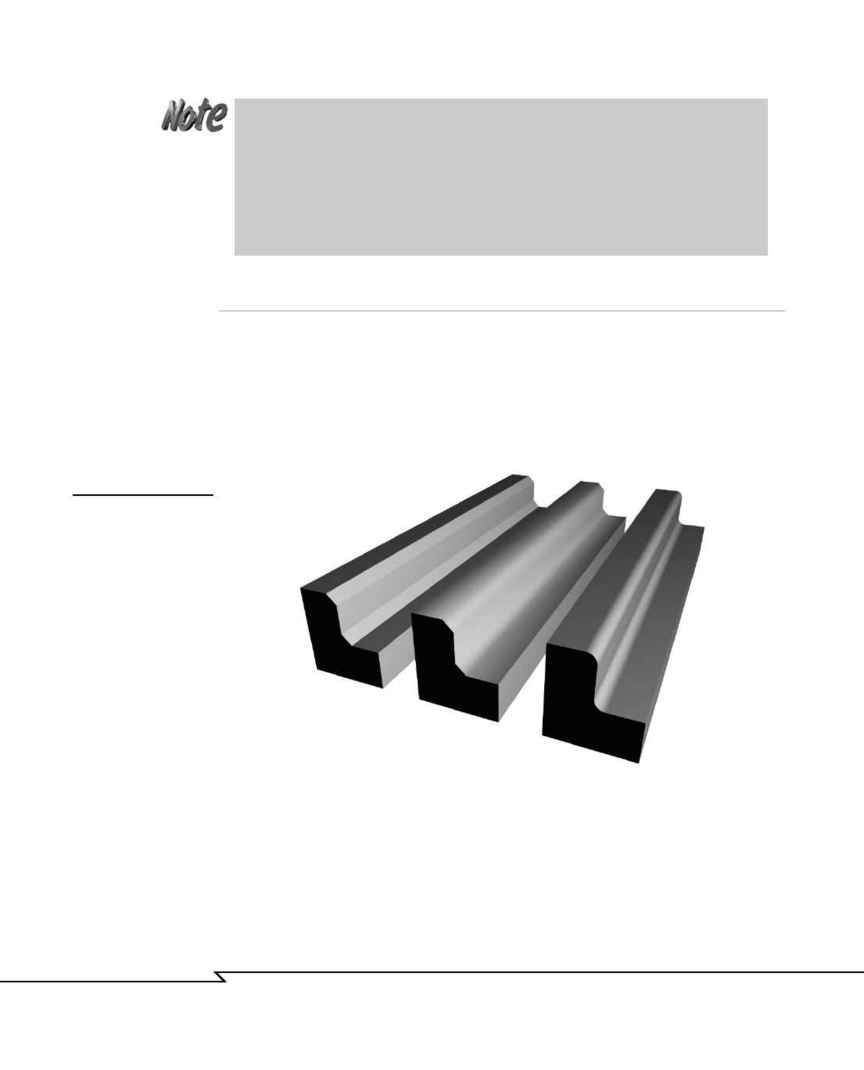
Radius Edges and Bevels
One of the most fundamental, yet often overlooked, tenets of better mod-
eling is that you should avoid having perfectly square edges in your mesh
whenever feasible. The reason is that few objects in the real world have
razor-sharp corners, and having them in your models makes the result look
very CG. Instead of using sharp corners, dull them by using bevels or
radius edges and corners (see Figure 4.3).
3 D G
R A P H I C S
& A
N I M A T I O N
152
Optimization capabilities saved the day on the Daedalus project, because of the
polygon-intensive method needed in 3D Studio R4 (DOS) to create and modify hi-
res organic models. By using the Yost Group's Optimize plug-in when the modeling
was done, however, scene mesh densities usually dropped 50% or more.This made
a dramatic difference in how long it took to render the scenes, because the unopti-
mized mesh usually caused massive virtual memory consumption at render time.
F
IGURE
4.3
Non-squared edges help
catch the light and look
more realistic. (a) Flat
bevel. (b) Bevel with
smoothed normals.
(c) Radius edges.
(a)
(b)
(c)
A bevel or chamfer is a flat transitional plane located between two other
planes, usually set at an angle that is half the difference between the two.
In other words, if you had a 90-degree corner, the bevel would be
45 degrees.
A radius edge uses an arc to transition between the planes, resulting in
a smoother transition when the object is seen close up, or when the
04 2433_CH04 8/23/02 8:34 AM Page 152
